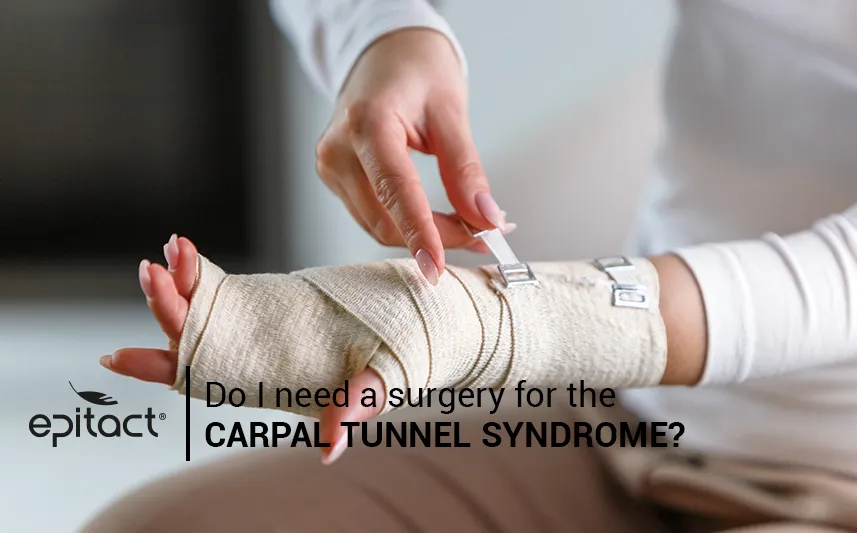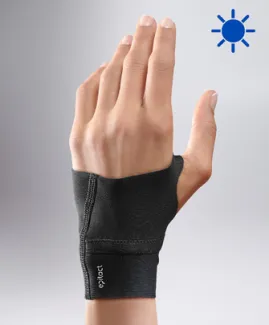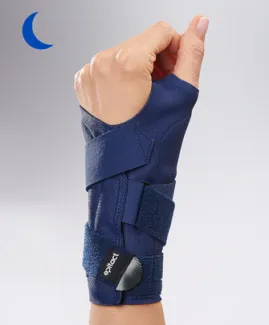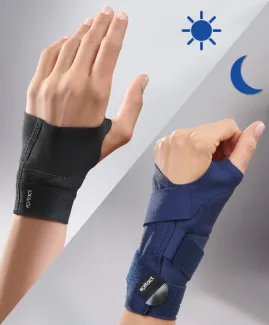
How to know if I should have carpal tunnel surgery? After the diagnosis, if conservative treatments (brace, anti-inflammatory drugs, etc.) have not been sufficient, your surgeon can recommend surgery.
Like any operation, all the risks (anaesthesia, potential complications, trauma for example) should be taken into account before making a decision. Carpal tunnel syndrome Surgery can’t be suggested as a first-line treatment approach, except in case of advanced-stage disease.
With EPITACT®, learn about the common techniques for carpal tunnel release surgery, and what to expect of the recovery time.
What is carpal tunnel release surgery?
Carpal tunnel release surgery aims to reduce pressure on the median nerve. To do so, the transverse carpal ligament is commonly cut to increase volume inside the carpal tunnel. It may sound radical but the ligament will naturally close during healing.
As there is more room for the median nerve, compression decreases as do the symptoms of carpal tunnel syndrome. Nevertheless, if there has been irreversible median nerve damage, so carpal tunnel surgery can prove ineffective.
Carpal tunnel syndrome release surgery: techniques of operation
Two main types of carpal tunnel syndrome surgery are used: the standard technique and the mini-invasive technique.
The standard surgery
The standard surgery, also known as the ‘open surgery’, releases the carpal tunnel thanks to a 3 cm incision in the heel of the hand. The median nerve is no longer compressed. However, location of the scar can cause persistent discomfort, especially while using a walking stick.
Also, this procedure may lead to slight strength reduction while gripping or pinching things with your thumb and index fingers. This carpal tunnel operation, which enables the surgeon to perfectly see the nerve, almost totally eliminates the risks of complications.
The mini-invasive surgery
The mini-invasive surgery, or endoscopic surgery, has the same objective. The incision is then significantly reduced (around 1 cm) and made in the wrist flexion crease. This avoids damage the tissues in the palm of the hand and allows good prehension movements. Post-operative recovery is then faster.
Therefore, specific formation and material cost are both factors that limit the use of this technique for carpal tunnel release surgery. In addition, it represents a risk of cutting the median nerve, especially if it is performed without a camera. This only concerns a few cases out of a thousand, but implies almost irreversible sequelae that deeply affect the use of the hand and annihilate sensitivity in the first three fingers.
Carpal tunnel surgery is very fast, no matter which technique has been performed. It lasts 10 to 20 minutes on average.
When is carpal tunnel bad enough for surgery?
Is it time to consider surgery? Carpal tunnel syndrome surgery is recommended for people with severe or recurrent symptoms, or if the medical treatments did not work. Severe symptoms are permanent sharp pain, tingling and numbness, significant sensitivity impairment and atrophy of the muscles at the base of the thumb, causing a loss or absence of grip strength.
The armamentarium before carpal tunnel release surgery includes wrist splints and support braces*, physical therapy, anti-inflammatory drugs and painkillers, and corticosteroid injections.
Before carpal tunnel syndrome surgery
Even if carpal tunnel operation is performed under regional anaesthesia, preanaesthetic evaluation is necessary to assess your situation and avoid potential complications. During the surgical intervention, the patient is laid on his/her back. Only the arm is anaesthetised. Temporary tourniquet prevents the blood from flowing to the wrist.
For both procedures, the intervention is performed on an outpatient basis. It means you’re hospitalised, operated and free to go home the same day.
Carpal tunnel surgery: recovery time
Like any operation, carpal tunnel release surgery requires post-operative care. Indeed, it is important to regularly change the dressing and to control the scar. Analgesics are often prescribed in order to reduce post-operative pain. A little after surgery, it is recommended to progressively reuse the fingers and wrist.
If a loss of motricity was observed before carpal tunnel surgery, recovery time can be longer than usual. Rehabilitation sessions can highly favour recovery. You could transiently feel unpleasant sensations like numbness and tingling. However, they gradually decrease along with post-operative pain.
It is crucial to properly follow your surgeon’s recommendations and to consult him in case of doubts. Follow-up consultation after carpal tunnel syndrome surgery contributes to its success and helps for good healing.
If you feel pain, try the EPITACT® wrist support braces!
CARP’ACTIV™* and CARP’IMMO™* have been specially developed to ease the symptoms of carpal tunnel syndrome. If you want to be relieved during your activities, CARP’ACTIV™ is a flexible wrist support that does not restrict your movements. You should wear it as a complement to CARP’IMMO™, a comfortable wrist brace that immobilises your hand and wrist at night.
*These solutions are medical devices that bear the CE marking under this regulation. Carefully read the instructions before use. Manufacturer: MILLET Innovation. 12/2021
 Pharmacie
Pharmacie

